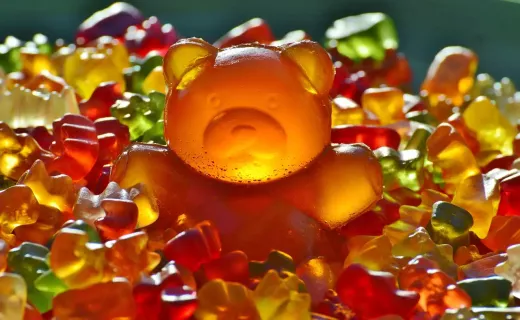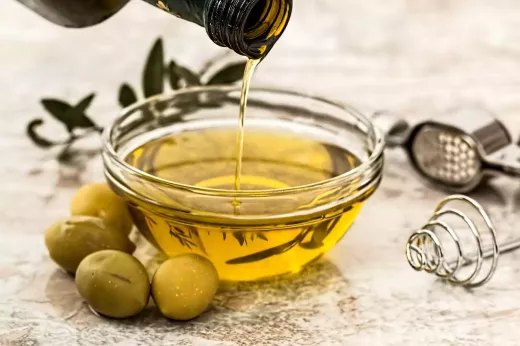The History of Hemp
Hemp has a rich history that dates back thousands of years. It is one of the oldest cultivated crops in the world and has been used for various purposes throughout history. Ancient civilizations, such as the Chinese and Egyptians, relied on hemp for its fibers, which were used to make clothing, rope, and other textiles. Hemp was also used for medicinal purposes and was considered a valuable crop.
Over time, hemp cultivation spread to different parts of the world, including Europe and America. During the colonial era, hemp was a crucial crop for the American colonies, with many farmers required by law to grow it. Hemp played a significant role in the production of textiles, paper, and even naval materials. However, with the rise of synthetic fibers and the demonization of cannabis, hemp cultivation faced significant restrictions and eventually became illegal in many countries.
The Difference between Hemp and Marijuana
One of the most common misconceptions about hemp is its association with marijuana. While both hemp and marijuana come from the same plant species, Cannabis sativa, they are distinct in their chemical composition and uses.
The primary difference between hemp and marijuana lies in their THC (tetrahydrocannabinol) content. THC is the psychoactive compound in cannabis that gives marijuana its intoxicating effects. Hemp, on the other hand, contains only trace amounts of THC (less than 0.3%), making it non-intoxicating. Instead, hemp is valued for its high CBD (cannabidiol) content, which has been linked to various potential health benefits.
Due to its low THC content, hemp is legally cultivated and used for industrial purposes in many countries. This distinction has opened up a world of possibilities for the cultivation and use of hemp in various industries.
Uses of Hemp in Various Industries
Hemp is a remarkably versatile plant with countless applications across different industries. The various parts of the hemp plant, including the leaves, seeds, and stems, can be used to produce a wide range of products. Let's explore some of the main uses of hemp in various industries.
Textiles: Hemp fibers are known for their strength and durability, making them ideal for textile production. Hemp clothing and fabrics are becoming increasingly popular due to their eco-friendly properties and comfort.
Paper: Hemp has been used for paper production for centuries. The fibers of the hemp plant can be processed to create high-quality paper that is more sustainable and environmentally friendly than traditional paper made from trees.
Food Products: Hemp seeds are highly nutritious and have a pleasant nutty flavor. They can be consumed raw, roasted, or ground into hemp protein powder. Hemp seeds are rich in protein, healthy fats, and essential nutrients, making them a popular choice for health-conscious individuals.
Building Materials: Hemp fibers can be used to create sustainable building materials, such as hempcrete, which is a mixture of hemp hurds, lime, and water. Hempcrete is lightweight, breathable, and has excellent insulation properties, making it an eco-friendly alternative to traditional construction materials.
Biofuel: Hemp can be processed to extract oil, which can be converted into biodiesel. Hemp biodiesel is a renewable and environmentally friendly fuel source that can help reduce carbon emissions and dependence on fossil fuels.
These are just a few examples of how hemp is being used in various industries. The versatility of this plant is truly remarkable, and its potential is still being explored.
The Benefits of Hemp for the Environment
Hemp is often hailed as an eco-friendly crop due to its numerous environmental benefits. Here are some of the ways in which hemp contributes to a more sustainable future:
Sustainable Farming: Hemp is a fast-growing crop that requires minimal water, pesticides, and fertilizers compared to other crops. Its dense growth also helps suppress weeds, reducing the need for herbicides. Hemp farming practices can help conserve water, protect soil health, and support biodiversity.
Carbon Sequestration: Hemp plants absorb large amounts of carbon dioxide from the atmosphere during their growth. This process, known as carbon sequestration, helps mitigate climate change by reducing greenhouse gas emissions.
Soil Remediation: Hemp has the ability to remove toxins and pollutants from the soil through a process called phytoremediation. This makes hemp an excellent choice for cleaning up contaminated soil and brownfield sites.
Biodiversity Support: Hemp fields provide habitat and food sources for various insect species, including bees. Bees are essential pollinators that play a crucial role in maintaining biodiversity and food production.
By choosing hemp-based products and supporting sustainable hemp farming practices, we can contribute to a healthier planet and a more sustainable future.
Hemp Farming and Cultivation
Hemp cultivation requires specific growing conditions and practices. It is a versatile crop that can be grown in various climates, but certain factors need to be considered for successful cultivation.
Climate and Soil Requirements: Hemp thrives in temperate climates with well-draining soil. It requires a minimum of 6-8 hours of direct sunlight daily. The soil should be loamy or sandy, with a pH level between 6 and 7.5.
Seed Selection: Choosing the right hemp seeds is crucial for successful cultivation. There are different varieties of hemp, each with specific characteristics and purposes. Farmers should select seeds that are suitable for their intended use and comply with local regulations.
Planting and Harvesting: Hemp can be grown from seeds or transplants. Seeds are typically sown directly into the soil in early spring or early summer. Hemp plants grow rapidly, reaching maturity within three to four months. The harvesting time depends on the desired use of the plant. Fiber hemp is typically harvested when the plants are at their peak fiber production, while hemp for seeds is harvested when the seeds are mature.
Regulations and Licensing: Before embarking on hemp cultivation, it is essential to research and comply with local regulations. Many countries require farmers to obtain licenses or permits for hemp cultivation due to its association with cannabis.
By understanding the specifics of hemp cultivation and following best practices, farmers can maximize their yields and contribute to the sustainable growth of the hemp industry.
Hemp Products and Their Benefits
Hemp has a wide range of products that offer numerous benefits to consumers. Let's explore some of the most popular hemp-based products and their advantages.
CBD Oil: CBD oil is derived from hemp plants and has gained popularity for its potential health benefits. CBD has been studied for its analgesic, anti-inflammatory, and anxiolytic properties. It is commonly used to alleviate pain, reduce anxiety, and promote overall well-being.
Hemp Clothing: Hemp fibers are known for their strength and durability, making them ideal for clothing production. Hemp clothing is breathable, hypoallergenic, and naturally resistant to mold and mildew. It also has excellent UV protection properties, making it a popular choice for outdoor apparel.
Hemp Paper: Hemp paper is an eco-friendly alternative to traditional paper made from trees. It is more sustainable to produce, requires fewer chemicals, and can be recycled multiple times without losing its quality. Hemp paper is also more durable and long-lasting than conventional paper.
Hemp Food Products: Hemp seeds and hemp-based food products offer a range of nutritional benefits. Hemp seeds are rich in protein, omega-3 fatty acids, fiber, and essential vitamins and minerals. They can be consumed raw, added to smoothies, sprinkled on salads, or used as an ingredient in various recipes.
Hemp Skincare Products: Hemp oil is known for its moisturizing and nourishing properties, making it a popular ingredient in skincare products. Hemp-based creams, lotions, and balms can help hydrate the skin, reduce inflammation, and promote healthy skin.
These are just a few examples of the many hemp-based products available in the market today. By incorporating these products into our daily lives, we can benefit from their unique properties and contribute to a more sustainable and eco-friendly lifestyle.
Legalization and Regulation of Hemp
The legalization and regulation of hemp vary from country to country and even within different regions. In recent years, there has been a global shift towards the legalization of hemp due to its economic and environmental potential.
Many countries have recognized the distinctions between hemp and marijuana and have implemented regulations to allow for the cultivation and use of hemp for industrial purposes. This has opened up new opportunities for farmers, entrepreneurs, and consumers to explore the benefits of hemp.
However, it is essential to note that despite the increasing acceptance and legalization of hemp, there are still regulations and restrictions in place. These regulations often govern the THC content of hemp, licensing requirements for cultivation, and the marketing and labeling of hemp-based products.
As the hemp industry continues to evolve, it is crucial for individuals and businesses to stay updated on the legal framework surrounding hemp in their respective regions. Understanding and complying with these regulations will ensure the responsible cultivation, production, and use of hemp.
Common Misconceptions about Hemp
Despite its many benefits, hemp is still surrounded by misconceptions and misinformation. Here are some of the most common misconceptions about hemp:
Hemp Gets You High: As mentioned earlier, hemp contains only trace amounts of THC and does not have psychoactive effects. Consuming hemp products will not result in a "high" or intoxication.
Hemp Is Illegal: While hemp faced restrictions and was illegal for many years, it has been legalized for industrial purposes in numerous countries. However, regulations regarding cultivation and use may still apply.
Hemp and Marijuana Are the Same: Although hemp and marijuana come from the same plant species, they are distinct in their chemical composition and uses. Hemp is valued for its fibers and CBD content, while marijuana is cultivated for its high THC content.
Hemp Is a New Crop: Hemp has a long history and has been cultivated for thousands of years. It was only in recent decades that hemp faced restrictions and became less prevalent due to misconceptions and legal issues.
By dispelling these misconceptions and educating ourselves and others about the true nature and potential of hemp, we can contribute to a more informed and progressive society.
Conclusion: The Future of Hemp
Hemp is a truly remarkable plant with immense potential. Its versatility, sustainability, and numerous applications make it a valuable resource for various industries. As we continue to explore and harness the benefits of hemp, we can create a more sustainable future that prioritizes eco-friendly practices and products.
Whether it's through the cultivation of hemp for textiles, paper, or biofuels, or the use of hemp-based products for health and wellness, there are endless opportunities to incorporate hemp into our lives.
By understanding the history, cultivation, and uses of hemp, we can make informed choices that support a more sustainable and eco-friendly lifestyle. The future of hemp looks bright, and by embracing this versatile plant, we can contribute to a greener and more sustainable world.








